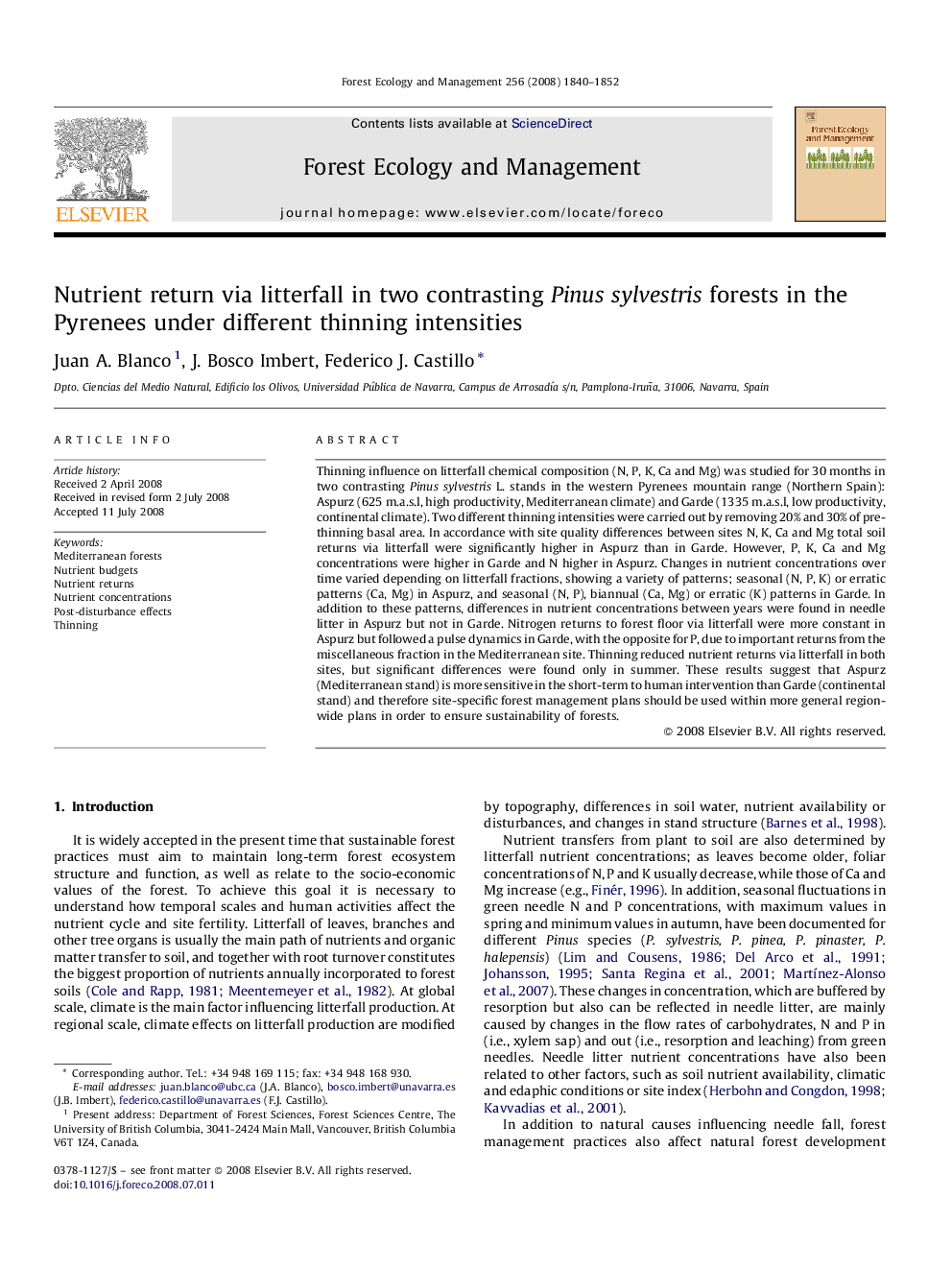| Article ID | Journal | Published Year | Pages | File Type |
|---|---|---|---|---|
| 88683 | Forest Ecology and Management | 2008 | 13 Pages |
Thinning influence on litterfall chemical composition (N, P, K, Ca and Mg) was studied for 30 months in two contrasting Pinus sylvestris L. stands in the western Pyrenees mountain range (Northern Spain): Aspurz (625 m.a.s.l, high productivity, Mediterranean climate) and Garde (1335 m.a.s.l, low productivity, continental climate). Two different thinning intensities were carried out by removing 20% and 30% of pre-thinning basal area. In accordance with site quality differences between sites N, K, Ca and Mg total soil returns via litterfall were significantly higher in Aspurz than in Garde. However, P, K, Ca and Mg concentrations were higher in Garde and N higher in Aspurz. Changes in nutrient concentrations over time varied depending on litterfall fractions, showing a variety of patterns; seasonal (N, P, K) or erratic patterns (Ca, Mg) in Aspurz, and seasonal (N, P), biannual (Ca, Mg) or erratic (K) patterns in Garde. In addition to these patterns, differences in nutrient concentrations between years were found in needle litter in Aspurz but not in Garde. Nitrogen returns to forest floor via litterfall were more constant in Aspurz but followed a pulse dynamics in Garde, with the opposite for P, due to important returns from the miscellaneous fraction in the Mediterranean site. Thinning reduced nutrient returns via litterfall in both sites, but significant differences were found only in summer. These results suggest that Aspurz (Mediterranean stand) is more sensitive in the short-term to human intervention than Garde (continental stand) and therefore site-specific forest management plans should be used within more general region-wide plans in order to ensure sustainability of forests.
